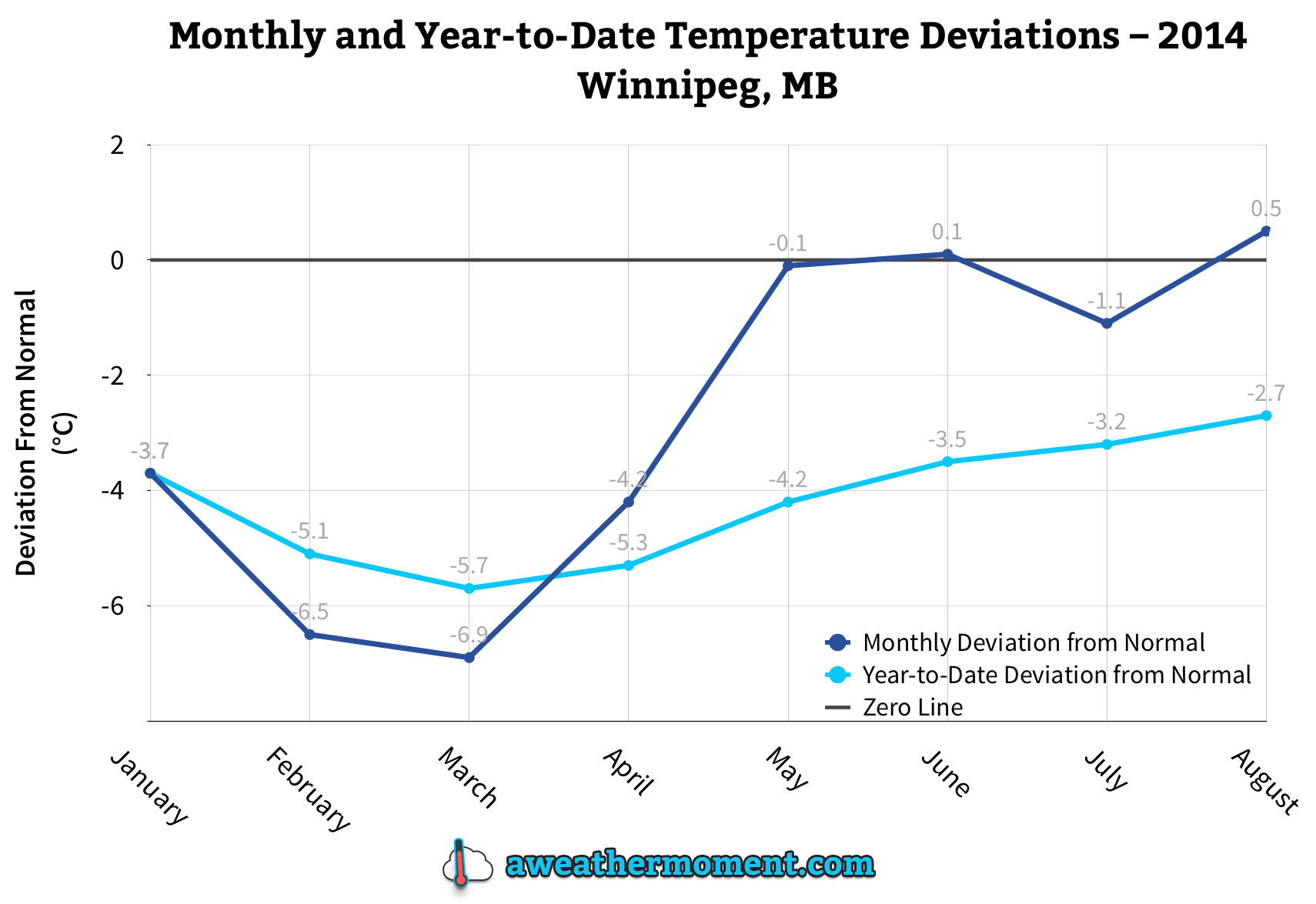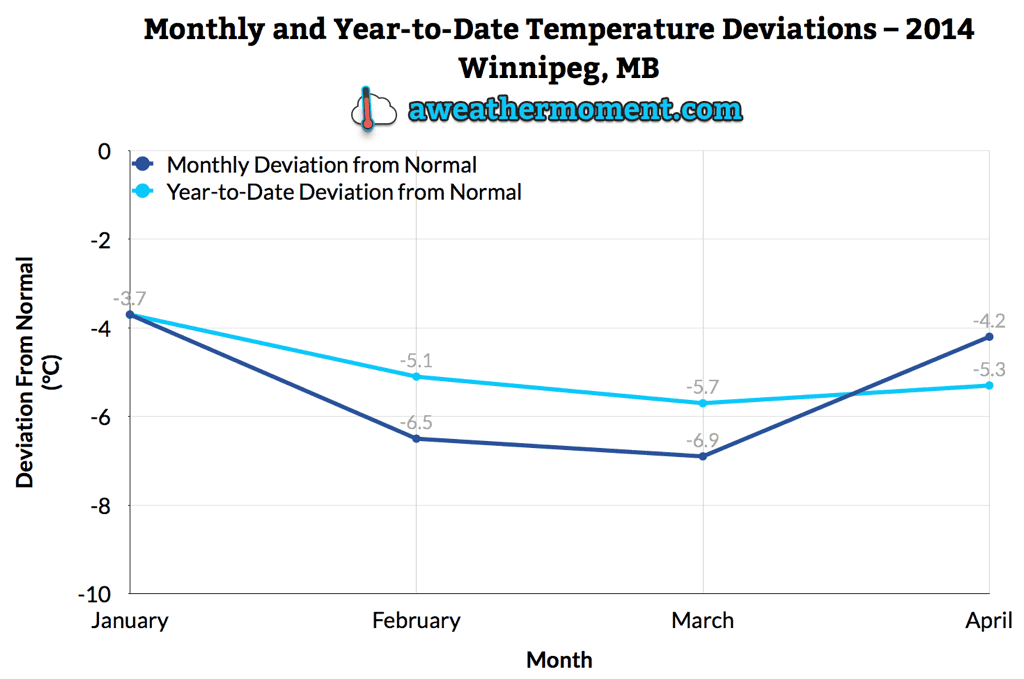As of September 1st, meteorological summer[1] has come to an end and the fall season is upon us. That means, of course, it’s time to take a look back on the summer of 2014 to see just how it fared in the grand scheme of things. Was it actually all that cold, or is that just our memories suffering from the prolonged winter? How wet was it actually? Was it a particularly stormy summer? We’ll take a look at how all of those things fared in Winnipeg as well as highlight a couple major events from the past 3 months across the province!
| Category | Summer 2014 Total or Average | Rank |
|---|---|---|
| Average High Temperature | 24.3°C | Tied 51st coldest |
| Mean Temperature | 18.2°C | Tied 67th coldest |
| Average Low Temperature | 12.1°C | Tied 53rd warmest |
| Total Rainfall | 276.9 mm | 29th rainiest |
| Thunderstorm Days | 17 days | Tied 23rd least |
Temperature-wise, there wasn’t much to talk about this summer in southern Manitoba. The summer averaged pretty much bang on normal in most areas, including Winnipeg where the average mean temperature of 18.2°C was just 0.2°C below normal. A similar story in Brandon where the average mean temperature of 17.4°C was just 0.1°C above normal. However, there was a notable lack of very hot days. There were only 5 days above 30°C in Winnipeg, below the normal of 12 days, and the least since 2009 when there were only 3 days over 30°C. Interestingly, the hottest day so far this year was actually in May when we hit a record 33.3°C on May 24th. Although it is not the first time our hottest day of the year was outside of the summer season, it is unusual. The last time this occurred was in 2004 when our hottest day of the year was on September 19th.
August Ends 10-month Cold Streak
| Rank | # of consecutive below normal months | Timeframe |
|---|---|---|
| 1 | 18 months | Dec 1882-May 1884 |
| 2 | 14 months | Jul 1884-Aug 1885 |
| 3 | 11 months | Oct 1887-Aug 1888 |
| 4 | 10 months | Oct 2013-Jul 2014 |
| 5 | 9 months | 1949/50, 2008/09 & 2012/13 |
August finished 0.5°C above the previous 30-year (1984–2013) average mean temperature of 18.7°C. This marked the end of a 10-month streak, from October 2013 to July 2014, of months colder than the previous 30-year average. This 10-month streak was the 4th longest of its kind since 1872 and the longest since an 11-month streak in 1887–1888.
Summer Flooding
A grand total of 276.9 mm of rain fell at Winnipeg airport June, July and August. Although this may seem like a lot of rain, this is actually only 12% above the 1981–2010 normal of 247.5 mm. So overall, we were pretty close to normal rainfall totals this summer. However, the problem this summer was that the rain was not spread out through the entire season. Rather, the majority of our rain fell in mid-late June and mid-late August. These two periods featured flooding in parts of southern Manitoba as too much rain fell in too little time. In fact, over 130 mm of rain fell in just 17 days in the second half of June at Winnipeg airport. The month finished 12th rainiest on record with 147.1 mm.
Conditions were worst in southwestern Manitoba this summer with well above normal rainfall; over 300 mm of rain fell in some of the hardest hit locations. Brandon was one of these locations, receiving a whopping 347.2 mm, almost an entire year’s worth of rain in just 3 months. 251.6 mm of this fell in June alone, Brandon’s rainiest June on record. In fact, 219.8 mm fell in just the last 12 days of June, more than half a year’s worth of rain!
The Year So Far
2014 continues to be much colder than normal. Up to August, the year has averaged 1.7°C; 2.7°C colder than normal for the period. This ties for 17th coldest January to August period on record since 1873, and is the coldest since 1979 when we averaged 0.7°C in the same period. Here’s hoping the year ends on a warmer note!

In terms of rainfall, the airport has seen 344.1 mm so far this year (up to August 31), which is pretty much bang on normal for the period. Higher amounts, closer to 400 mm, have fallen in southwestern parts of Winnipeg where heavier rains fell in August.
- Metorological summer is considered June, July and August. ↩





.png)

